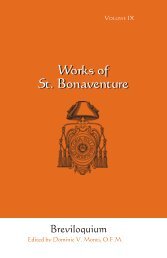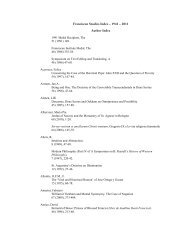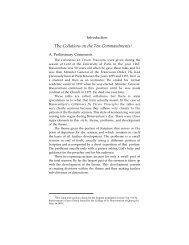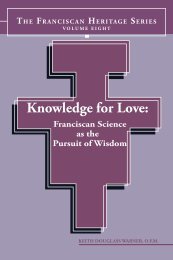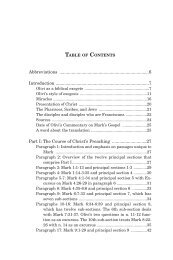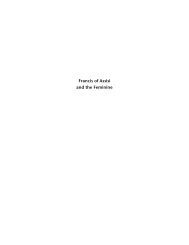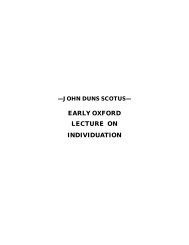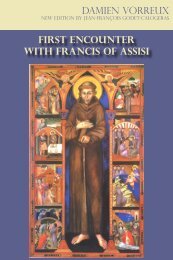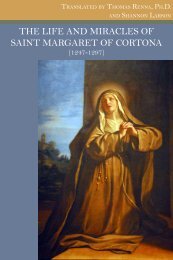FOUR QUESTIONS ON MARY - Franciscan Institute Publications
FOUR QUESTIONS ON MARY - Franciscan Institute Publications
FOUR QUESTIONS ON MARY - Franciscan Institute Publications
You also want an ePaper? Increase the reach of your titles
YUMPU automatically turns print PDFs into web optimized ePapers that Google loves.
John Duns Scotus: Four Questions on Mary<br />
Both admitted the common opinion that Mary contracted<br />
original sin, but as St. Thomas had indicated earlier no one<br />
knew the precise moment after animation that her soul was<br />
sanctified. Henry of Ghent, however, had proposed a particularly<br />
controversial theory claiming that the period her soul<br />
was in a state of sin could be reduced to a single moment, a<br />
mathematical point in time. The occasion on which he proposed<br />
this novel theory was in a solemn public disputation<br />
open to any interested non-professional as well as to the faculty<br />
and university students of theology from all over Europe.<br />
This was not the ordinary disputation the regent Masters<br />
took turns in conducting regularly during the academic year,<br />
but the specially challenging public disputation held either<br />
the second or third week of Advent or shortly before Easter<br />
when all classes were suspended to facilitate attendance.<br />
Called a “Quodlibet” (the Latin term for “anything”) it was<br />
an academic event where anyone could raise any question<br />
on any topic of current theological interest and the presiding<br />
Master had to answer it. The particular question asked<br />
of Master Henry concerned the Feast of the Conception of<br />
Mary recently celebrated on December 8th. It was probably<br />
a few days later that Henry held his fifteenth Quodlibet during<br />
Advent of 1291, and most likely someone from England<br />
in his audience raised the hotly controversial subject: “Is the<br />
conception of the Virgin Mary to be celebrated by reason of<br />
her conception?” 19 The student theologian knew many back<br />
home believed Mary had never contracted original sin. They<br />
claimed Archbishop of Canterbury and Primate of England<br />
himself supported this view, because they credited St. Anselm<br />
with the authorship of Eadmer’s unsigned tract. But<br />
here in Paris, as Bonaventure had noted earlier, no Master<br />
ever accepted such a theory. 20 Hence the carefully worded<br />
19 Henry: Utrum conceptio virginis Mariae sit celebranda ratione conceptionis.<br />
Quodlibet XV, q. 13 (Parisiis, 1518, photoreprint Louvain, 1961),<br />
fol. 584r).<br />
20 After presenting a masterful account of the “pious opinion” the Anglo-Norman<br />
students brought to Paris, St. Bonaventure reluctantly rejects<br />
it in favor of traditional view. Securior etiam est, quia magis consonat fidei<br />
pietati et Sanctorum auctoritati ... communiter Sancti, cum de materia<br />
ista loquuntur, solum Christum excipiunt ab illa generalitate, qua dicitur<br />
8



